Ascorbate peroxidase 4 plays a role in the tolerance of Chlamydomonas reinhardtii to photo-oxidative stress
- PMID: 32764698
- PMCID: PMC7414030
- DOI: 10.1038/s41598-020-70247-z
Ascorbate peroxidase 4 plays a role in the tolerance of Chlamydomonas reinhardtii to photo-oxidative stress
Abstract
Ascorbate peroxidase (APX; EC 1.11.1.11) activity and transcript levels of CrAPX1, CrAPX2, and CrAPX4 of Chlamydomonas reinhardtii increased under 1,400 μE·m-2·s-1 condition (HL). CrAPX4 expression was the most significant. So, CrAPX4 was downregulated using amiRNA technology to examine the role of APX for HL acclimation. The CrAPX4 knockdown amiRNA lines showed low APX activity and CrAPX4 transcript level without a change in CrAPX1 and CrAPX2 transcript levels, and monodehydroascorbate reductase (MDAR), dehydroascorbate reductase (DHAR), and glutathione reductase (GR) activities and transcript levels. Upon exposure to HL, CrAPX4 knockdown amiRNA lines appeared a modification in the expression of genes encoding the enzymes in the ascorbate-glutathione cycle, including an increase in transcript level of CrVTC2, a key enzyme for ascorbate (AsA) biosynthesis but a decrease in MDAR and DHAR transcription and activity after 1 h, followed by increases in reactive oxygen species production and lipid peroxidation after 6 h and exhibited cell death after 9 h. Besides, AsA content and AsA/DHA (dehydroascorbate) ratio decreased in CrAPX4 knockdown amiRNA lines after prolonged HL treatment. Thus, CrAPX4 induction together with its association with the modulation of MDAR and DHAR expression for AsA regeneration is critical for Chlamydomonas to cope with photo-oxidative stress.
Conflict of interest statement
The authors declare no competing interests.
Figures
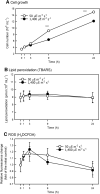
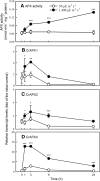

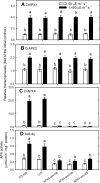
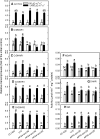


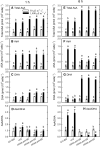
References
Publication types
MeSH terms
Substances
LinkOut - more resources
Full Text Sources
Research Materials
Miscellaneous

